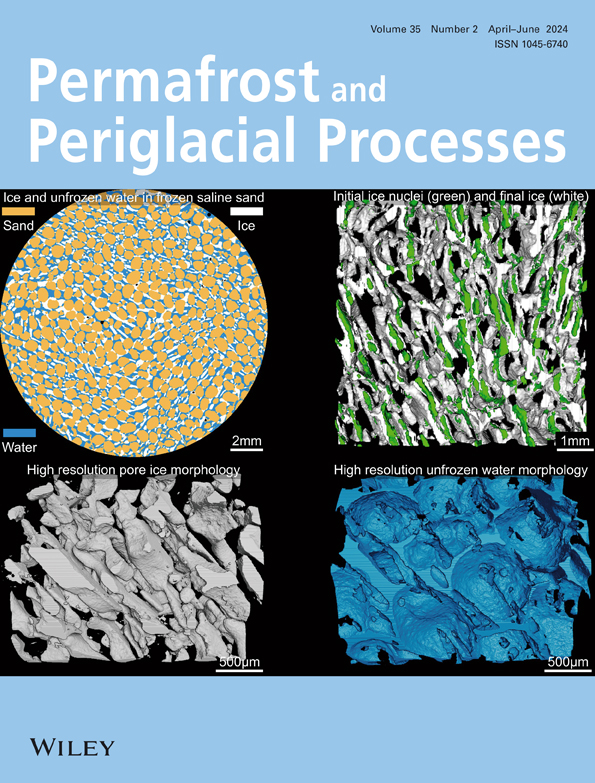斯蒂芬·泰伯与北美冰冻地层学和冰缘地貌学的发展
IF 3.3
3区 地球科学
Q2 GEOGRAPHY, PHYSICAL
引用次数: 2
摘要
斯蒂芬·泰伯关于冰分离和霜胀的早期研究远远领先于那个时代。他关于冰分离的实验室实验导致了我们目前在寒冷地区建造道路和其他结构的土木和岩土工程师对冻胀的理解。这也为后来以过程为导向的冷气候地貌过程野外研究奠定了基础。Taber 1943年出版的关于阿拉斯加永久冻土起源和历史的区域专著是区域冰冻地层学的最早例子,并开创了后来由Katasonov、Popov、Mackay、psamuw本文章由计算机程序翻译,如有差异,请以英文原文为准。
Stephen Taber and the development of North American cryostratigraphy and periglacial geomorphology
Stephen Taber's early work on ice segregation and frost heaving was far ahead of its time. His laboratory experiments regarding ice segregation led to our current understanding of frost heave by civil and geotechnical engineers building roads and other structures in cold regions. It also laid the foundation for later process‐oriented field studies of cold‐climate geomorphic processes. Taber's 1943 regional monograph on the origin and history of perennially frozen ground in Alaska, published by the Geological Society of America, was the earliest example of regional cryostratigraphy, and pioneered the regional permafrost and Quaternary studies undertaken later by Katasonov, Popov, Mackay, Péwé, Hopkins, and others. An important dimension of Taber's Alaska work was his application of knowledge gained through laboratory experimentation to the interpretation of ground‐ice exposures in the field. While S. W. Muller is widely regarded as the “father” of permafrost studies in North America, Taber is properly viewed as the “progenitor” of cryostratigraphic studies, although he is not yet widely regarded as such. This study uses archival resources to provide historical context regarding the development of Taber's monograph, to investigate details about the review and publication process it underwent, and to explore the question of why it remains undervalued.
求助全文
通过发布文献求助,成功后即可免费获取论文全文。
去求助
来源期刊
CiteScore
9.70
自引率
8.00%
发文量
43
审稿时长
>12 weeks
期刊介绍:
Permafrost and Periglacial Processes is an international journal dedicated to the rapid publication of scientific and technical papers concerned with earth surface cryogenic processes, landforms and sediments present in a variety of (Sub) Arctic, Antarctic and High Mountain environments. It provides an efficient vehicle of communication amongst those with an interest in the cold, non-glacial geosciences. The focus is on (1) original research based on geomorphological, hydrological, sedimentological, geotechnical and engineering aspects of these areas and (2) original research carried out upon relict features where the objective has been to reconstruct the nature of the processes and/or palaeoenvironments which gave rise to these features, as opposed to purely stratigraphical considerations. The journal also publishes short communications, reviews, discussions and book reviews. The high scientific standard, interdisciplinary character and worldwide representation of PPP are maintained by regional editorial support and a rigorous refereeing system.

 求助内容:
求助内容: 应助结果提醒方式:
应助结果提醒方式:


